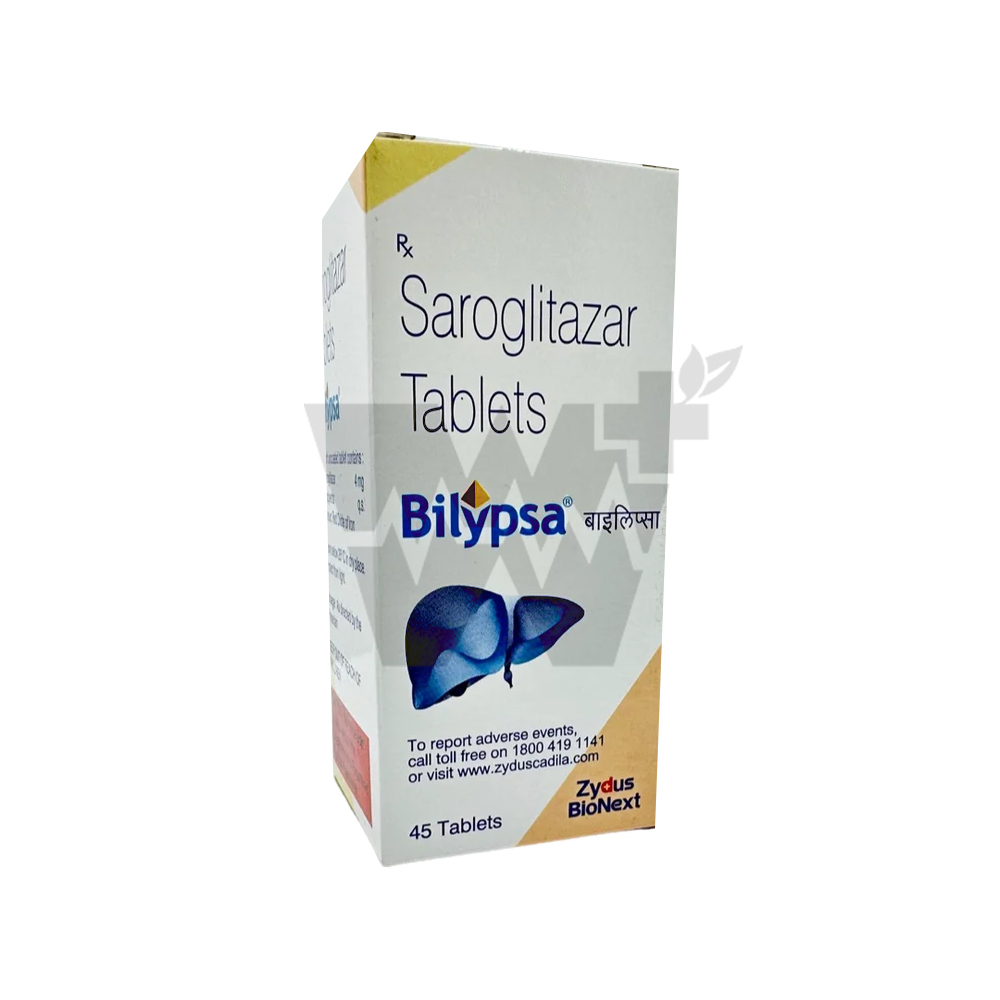



Introduction of Bilypsa Tablet:
Bilypsa Tablet is a medication used in the treatment of Noncirrhotic Non-Alcoholic Steatohepatitis, Non-alcoholic Fatty Liver Disease (NAFLD) with comorbidities (such as obesity, Type 2 Diabetes Mellitus, Dyslipidemia or Metabolic Syndrome), and elevated cholesterol in diabetes (diabetic dyslipidemia).
Bilypsa Tablet may be taken regardless of food, at the same time every day, to maximize its benefits, and you should not stop taking it unless your doctor suggests it. It is crucial to stay on the diet and exercise program recommended by your doctor while taking this medication. Your lifestyle plays a significant role in maintaining a healthy body weight, which will help preserve your liver health overall.
Uses of Bilypsa Tablet:
Noncirrhotic Non-Alcoholic Steatohepatitis
Non-alcoholic fatty liver disease
Diabetic dyslipidemia (elevated cholesterol in diabetes)
Benefits of Bilypsa Tablet:
In Noncirrhotic Non-Alcoholic Steatohepatitis:
Noncirrhotic non-alcoholic steatohepatitis (NASH) is liver inflammation and damage caused by excess fat in the liver. Due to the damage, the liver does not function as well as it should. Bilypsa Tablet reduces fat deposition, thereby improving its overall function.
In Non-alcoholic Fatty Liver Disease:
Non-alcoholic fatty liver disease is a condition characterized by increased accumulation of fat in the liver. It affects individuals who consume little to no alcohol. Bilypsa Tablet protects the liver and reduces the risk of liver failure.
In Diabetic Dyslipidemia (Elevated Cholesterol in Diabetes):
Bilypsa Tablet helps manage elevated cholesterol, as well as glucose levels in people with type 2 diabetes. It is generally used in individuals whose cholesterol levels are not controlled by statin treatment alone. By controlling elevated cholesterol levels, Bilypsa Tablet reduces the risk of heart diseases.
Mechanism of action of Bilypsa Tablet:
Bilypsa Tablet contains Saroglitazar, a dual-action peroxisome proliferator-activated receptor (PPAR) inhibitor that aids in the management of elevated cholesterol, especially triglycerides, as well as glucose levels in individuals with type 2 diabetes. It acts by a unique mechanism in which it reduces the synthesis and secretion of triglycerides (a type of lipid or cholesterol in blood). It also improves insulin responsiveness of the body for better utilization of the existing insulin and thus lowers the glucose levels.